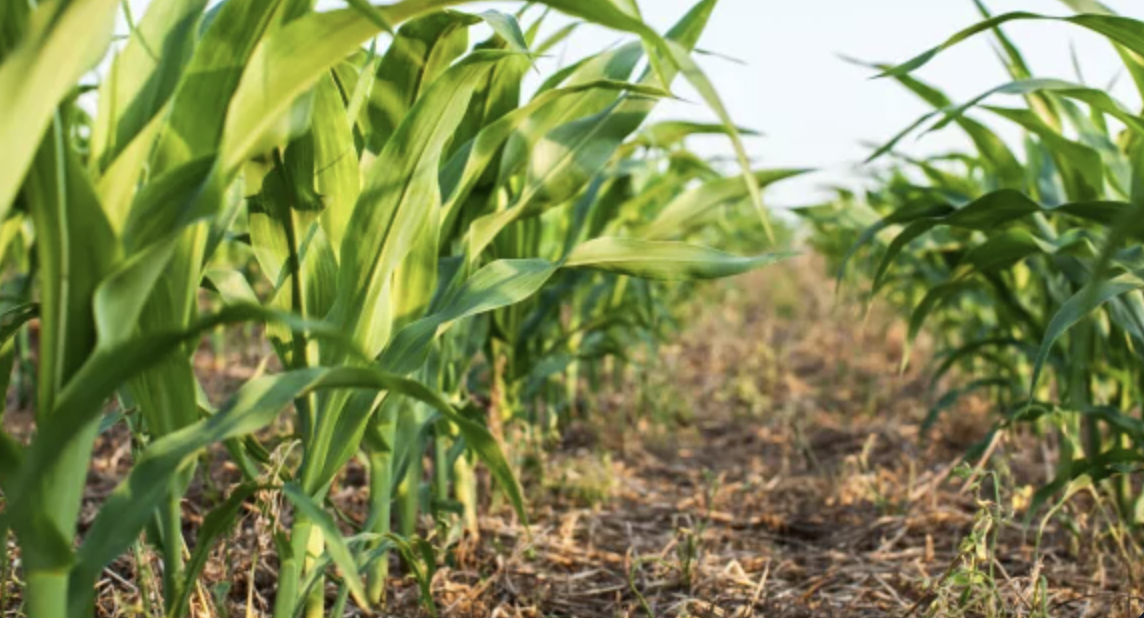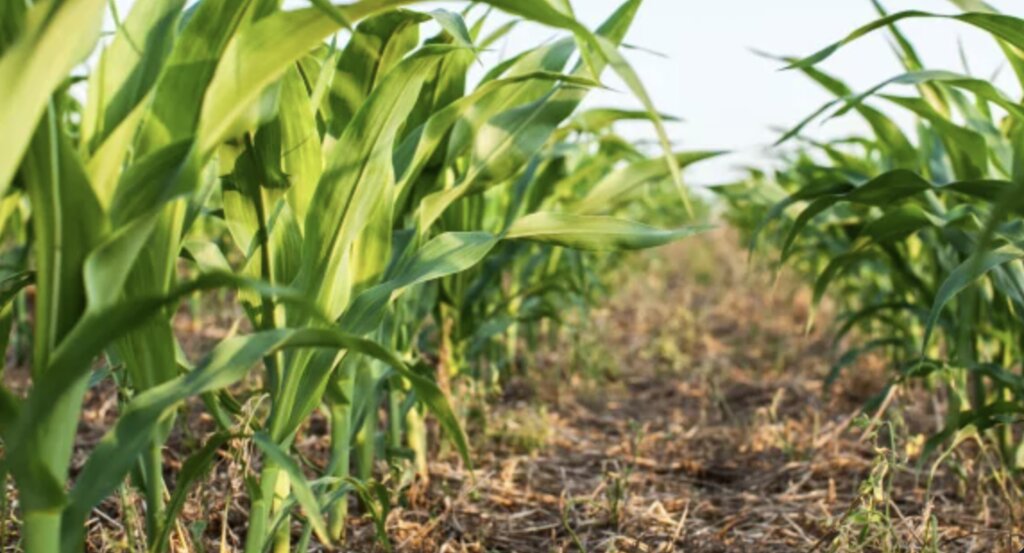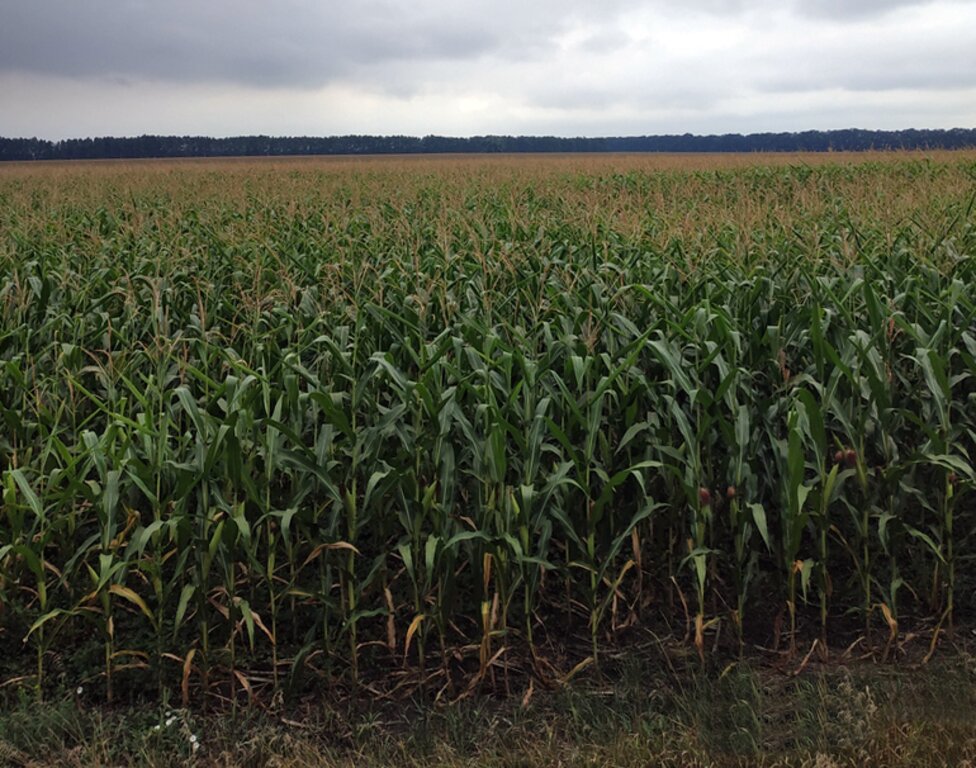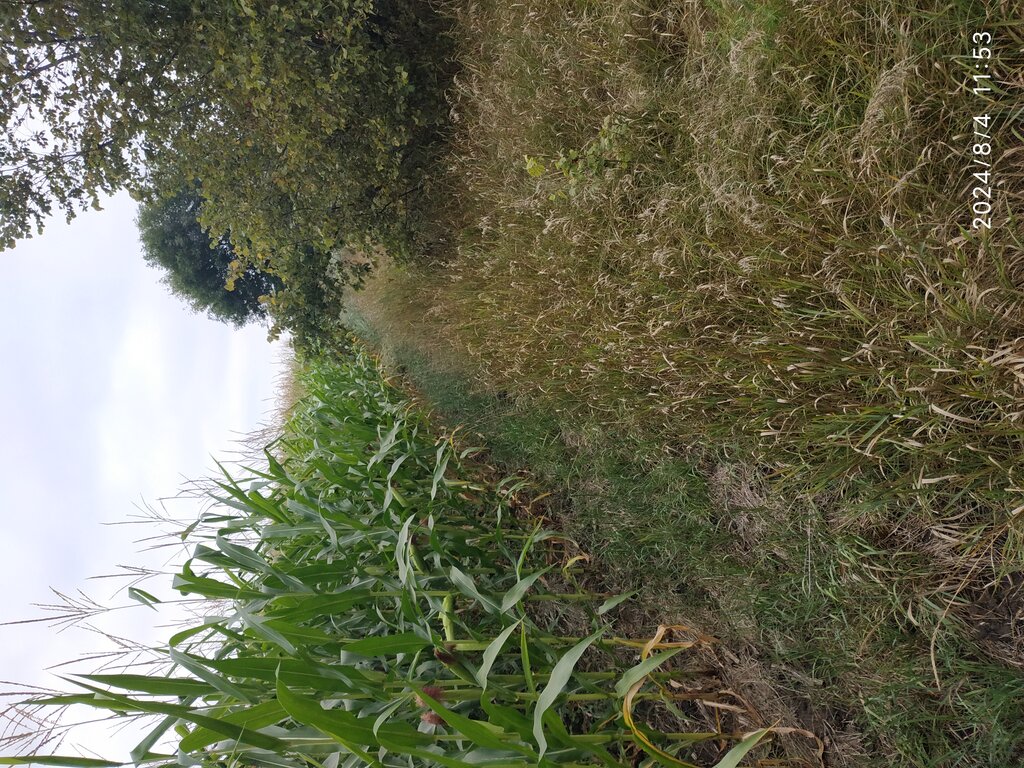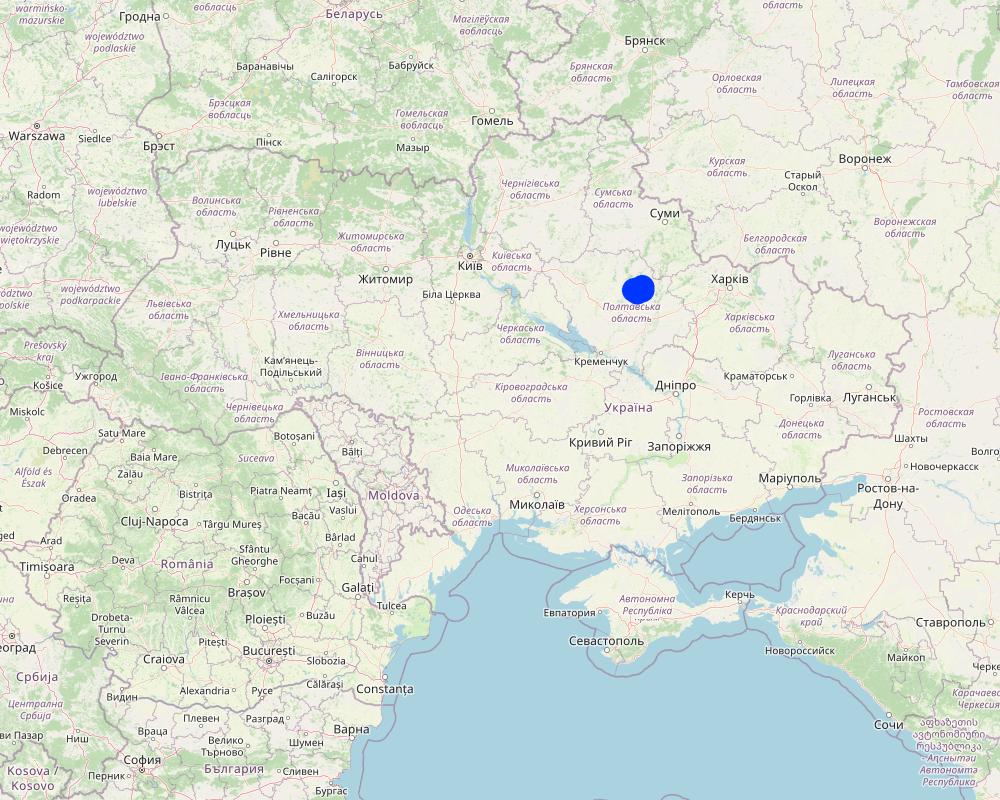Organic Agriculture with Reduced Tillage [Ucrânia]
- Criação:
- Atualização:
- Compilador/a: Natalia Prozorova
- Editor: –
- Revisores: William Critchley, Rima Mekdaschi Studer
Organic Agriculture
technologies_7440 - Ucrânia
Veja as seções
Expandir tudo Recolher tudo1. Informação geral
1.2 Detalhes do contato das pessoas capacitadas e instituições envolvidas na avaliação e documentação da tecnologia
Pessoa(s) capacitada(s)
Especialista em GST:
Prozorova Natalia
National Scientific Center «Institute for SoilScience and Agrochemistry Research, named after O.N. Sokolovsky»
Ucrânia
Nome do projeto que facilitou a documentação/avaliação da Tecnologia (se relevante)
Land Use Based Mitigation for Resilient Climate Pathways (LANDMARC)Nome da(s) instituição(ões) que facilitou(ram) a documentação/ avaliação da Tecnologia (se relevante)
Delft University of Technology (TU Delft)1.3 Condições em relação ao uso da informação documentada através de WOCAT
O/a compilador/a e a(s) pessoa(s) capacitada(s) aceitam as condições relativas ao uso de dados documentados através da WOCAT:
Sim
1.4 Declaração de sustentabilidade da tecnologia descrita
A tecnologia descrita aqui é problemática em relação a degradação da terra de forma que não pode ser declarada uma tecnologia de gestão sustentável de terra?
Não
2. Descrição da tecnologia de GST
2.1 Descrição curta da tecnologia
Definição da tecnologia:
This organic agriculture technology combines reduced tillage with organic farming practices to enhance soil health, increase carbon sequestration, and maintain sustainable agricultural productivity.
2.2 Descrição detalhada da tecnologia
Descrição:
This example of organic agriculture is applied primarily in the central Poltava region of Ukraine, which is characterized by undulating plains within the Poltava Plateau. The region’s fertile chernozem soils provide an ideal environment for sustainable farming practices. These soils are predominantly deep, medium-humus, medium-loam chernozems, known for their agronomically favourable physical and chemical properties, including high organic carbon content (around 3% in the upper layer) and excellent water retention capacity. The natural fertility of these soils, combined with their relatively high nitrogen and exchangeable potassium content, underpins their suitability for organic farming.
Organic agriculture in this context combines two land management technologies (LMTs): reduced tillage and organic farming. Reduced tillage minimizes soil disturbance, which preserves soil structure and reduces erosion, while organic farming eliminates synthetic inputs and relies on crop rotations, organic fertilizers, and biological pest control to maintain soil health and ecosystem balance. The purpose of these practices is to enhance soil carbon sequestration, mitigate climate change impacts, and support sustainable agricultural productivity.
Farming is certified as a producer of organic plant products in accordance with the standards equivalent to Council Resolutions (EU) 834/2007 and 889/2008.
Under this system, shallow tillage is carried out to a depth of 4–6 cm, which helps preserve the natural structure and capillarity of the soil. It employs Horsch cultivators of the "Agrosoyuz," "Scorpion," and "Quant" models. The enterprise also extensively uses disc harrows from the French manufacturer Grégoire Besson, such as the DXRV and DXRV-HD models, which are employed for green manure incorporation. These tools operate at a precisely determined depth, regardless of the micro-relief of the field. Thus, PE "Agroecology" does not use ploughs for inversion tillage but instead prioritizes shallow tillage with cultivators and disc harrows.
The main crops grown include winter wheat, soy, corn, sunflower, and perennial herbs such as sainfoin. The combination of these crops supports soil fertility and biodiversity while maintaining agricultural productivity. Land Mitigation Technology (LMT) refers to practices and technologies designed to reduce or offset the environmental impact of land use activities. It includes strategies for restoring degraded ecosystems, preventing soil erosion, conserving biodiversity, and managing resources sustainably. LMT is often applied in agriculture, construction, and land development to balance development needs with environmental protection.
Key activities to establish and maintain the technology include transitioning from conventional to organic farming practices, adapting tillage methods to reduced-intensity operations, and maintaining organic soil fertility through natural inputs. These activities require significant initial effort and investment, including soil testing for nutrient content and organic carbon stocks, stakeholder engagement for field planning, and long-term monitoring of soil health indicators. The establishment process also involves collaboration with scientific institutions, such as ISSAR and Bioclear Earth, to ensure effective implementation and validation of the technology.
The primary benefits of this technology include improved soil structure, increased biodiversity, reduced greenhouse gas emissions, and enhanced carbon sequestration. The technology has demonstrated the potential to sequester up to 0.4 t C ha⁻¹ yr⁻¹, with minimal yield trade-offs. Additionally, the resilience of the chernozem soils supports similar crop yields in both organic and conventional systems, thanks to their natural fertility and lower input rates in conventional agriculture. Farmers particularly value the long-term sustainability and ecological benefits of organic farming.
Land users face challenges with this technology. Transitioning to organic farming can result in temporary yield reductions, requiring adaptation in farm management practices. Furthermore, reduced tillage demands specific equipment and techniques, which may present a financial barrier for some farmers. The implementation of organic farming also requires significant effort in pest and weed management due to the absence of chemical inputs.
Overall, this form of organic agriculture represents a promising approach to sustainable farming in Ukraine, particularly in the fertile Chernozem region. Its ability to enhance carbon sequestration while maintaining comparable yields to conventional systems highlights its potential to contribute to climate mitigation and soil restoration goals. Further research and field validation are needed to refine the understanding of its impacts and optimize its implementation.
2.3 Fotos da tecnologia
Observações gerais sobre as fotos:
The photos provide a detailed view of the agricultural practices in the field, highlighting the healthy state of the maize crops in central Ukraine. These images capture the natural environment where organic farming techniques are being applied, showcasing the crops' growth, the quality of the soil, and the overall ecological balance. The close-up shots emphasize the care taken to maintain soil health and biodiversity, aligning with the principles of organic farming. The visuals also illustrate the sustainable land management practices that promote environmental stewardship and high agricultural yields.
2.5 País/região/locais onde a tecnologia foi aplicada e que estão cobertos nesta avaliação
País:
Ucrânia
Região/Estado/Província:
Poltava region, Shishaky area
Especificação adicional de localização:
Poltava region on the left bank of the river Psyol, in 20 km from urban-type settlement Shishaky and in 80 km to the regional center Poltava
Especifique a difusão da tecnologia:
- Uniformemente difundida numa área
Se a área precisa não for conhecida, indicar a área aproximada coberta:
- 1.000-10,000 km2
O(s) local(is) tecnológico(s) está(ão) localizado(s) em uma área permanentemente protegida?
Não
Map
×2.6 Data da implementação
Caso o ano exato seja desconhecido, indique a data aproximada:
- 10-50 anos atrás
2.7 Introdução da tecnologia
Especifique como a tecnologia foi introduzida:
- atráves de inovação dos usuários da terra
3. Classificação da tecnologia de GST
3.1 Principal/principais finalidade(s) da tecnologia
- Reduz, previne, recupera a degradação do solo
- Adaptar a mudanças climáticas/extremos e seus impactos
- Atenuar a mudanças climáticas e seus impactos
- chernozem productivity assessment between conventional and traditional agriculture
3.2 Tipo(s) atualizado(s) de uso da terra onde a tecnologia foi aplicada
Uso do solo misturado dentro da mesma unidade de terra:
Não

Terra de cultivo
- Cultura anual
- Perennial herbs
Cultivo anual - Especificar culturas:
- cereais - trigo sarraceno
- cereais - trigo (inverno)
Sistema de cultivo anual:
Trigo ou rotação similar com feno/pasto
Número de estações de cultivo por ano:
- 2
Especifique:
Spring/Summer Season; Autumn/Winter Season
O cultivo entre culturas é praticado?
Sim
Em caso afirmativo, especifique quais são as culturas intercultivadas:
Intercropping involves a combination of perennial herbs (such as sainfoin) with annual crops like buckwheat or sunflower. This practice helps optimize resource use, improve soil fertility, and enhance field biodiversity.
O rodízio de culturas é praticado?
Sim
Caso afirmativo, especifique:
The crop rotation system includes a diverse mix of:
Annual crops: Buckwheat, winter wheat, soya, corn, and sunflower.
Perennial crops: Sainfoin, spelt, and other forage herbs.
This rotation is designed to Maintain soil fertility, Reduce the risk of pests and diseases, Optimize nutrient use, and Support sustainable farming practices. The rotation is adapted to the specific soil and climatic conditions of the region to ensure long-term productivity and environmental health.
3.3 O uso do solo mudou devido à implementação da Tecnologia?
O uso do solo mudou devido à implementação da Tecnologia?
- Não (Continuar com a pergunta 3.4)
3.4 Abastecimento de água
Abastecimento de água para a terra na qual a tecnologia é aplicada:
- Precipitação natural
3.5 Grupo de GST ao qual pertence a tecnologia
- Solo/cobertura vegetal melhorada
- Gestão integrada de fertilidade do solo
3.6 Medidas de GST contendo a tecnologia

Medidas agronômicas
- A1: cobertura vegetal/do solo
- A2: Matéria orgânica/fertilidade do solo
- A3: Tratamento da superfície do solo
3.7 Principais tipos de degradação da terra abordados pela tecnologia

Outro
Especifique:
Some water and wind erosion (but almost no erosion at all)
3.8 Redução, prevenção ou recuperação da degradação do solo
Especifique o objetivo da tecnologia em relação a degradação da terra:
- Prevenir degradação do solo
Comentários:
The organic agriculture system in Poltava prevents land degradation through sustainable practices, including:
Reduced tillage: Maintains soil structure and minimizes erosion.
Use of mulch: Organic mulch, such as crop residues, is applied to protect the soil from wind erosion, conserve moisture, and reduce surface runoff.
Crop rotation and intercropping: These practices improve soil health, reduce nutrient depletion, and promote biodiversity.
Green manure incorporation: Enhances soil organic matter and strengthens soil resilience against degradation.
This proactive approach ensures that the fertile chernozem soils remain productive and sustainable for future generations while reducing the risks of erosion and nutrient loss.
4. Especificações técnicas, implementação de atividades, entradas e custos
4.1 Desenho técnico da tecnologia
Especificações técnicas (relacionada ao desenho técnico):
Dimensions of Structures or Vegetative Elements:
Raised Beds/Planting Rows: Typically range from 10–30 cm in height and 30–60 cm in width, depending on crop and soil type.
Plant Spacing: Varies by crop; cereals (e.g., wheat, barley) are spaced 20–30 cm apart, while row crops (e.g., sunflower, corn) are spaced 50–80 cm apart. Cover crops are planted more densely, up to 200 plants/m².
Vertical and Lateral Gradients:
Contour Planting and Terraces: Applied in areas with slopes of 5–15°. Terraces or contour planting are spaced at 5–20 meters vertically to reduce erosion and enhance soil stability. The lateral gradient is maintained at ≤1% through contour plowing or vegetation strips, following natural land contours.
Slope Adjustment:
Before and After Technology Implementation: Initial slopes (5–15°) are slightly leveled or terraced, reducing slope gradients to improve soil stability and prevent erosion.
Machinery for Reduced Tillage:
The technology employs Horsch cultivators (e.g., AgroSoyuz, Scorpion, Quant) and disc harrows from Gregoire Besson (DXRV and DXRV-HD models). These tools are precisely calibrated to a shallow tillage depth of 4–6 cm, ensuring minimal soil disturbance.
These machines operate efficiently, incorporating green manure while preserving the soil's natural structure and capillarity. They eliminate the need for plowing, which is traditionally associated with significant soil disruption.
Species Used and Plant Densities:
Legumes: Clover, vetch, sainfoin.
Cereals: Winter wheat, barley, spelt.
Row Crops: Sunflower, corn.
Cover Crops: High-density planting up to 200 plants/m² for effective soil coverage and nutrient cycling.
Plant Densities: 150,000–200,000 plants/ha for cereals and legumes; 30,000–50,000 plants/ha for row crops.
Materials Used:
Construction materials include loamy soil, organic mulches, compost, and locally sourced biomass.
Autor:
Larisya Shedei
Data:
12/04/2023
4.2 Informação geral em relação ao cálculo de entradas e custos
Especifique como custos e entradas foram calculados:
- por área de tecnologia
Indique o tamanho e a unidade de área:
7000 ha, it represents a large typical farm in Ukraine. It’s also a convenient size for scaling up agricultural solutions or technologies.
Especifique a moeda utilizada para os cálculos de custo:
- USD
Indique a média salarial da mão-de-obra contratada por dia:
depending on local conditions and the type of labor required (e.g., general farm work vs. skilled machinery operation)
4.3 Atividades de implantação
| Atividade | Periodicidade (estação do ano) | |
|---|---|---|
| 1. | Soil testing (chemical & biological) | Pre-season |
| 2. | Transition planning (certification) | Pre-season (2-3 months before planting) |
| 3. | Cover crop seeds (e.g., clover, vetch) | Pre-season (1-2 months before planting) |
| 4. | Compost/organic amendments | Pre-planting (2-3 weeks before planting) |
| 5. | Reduced tillage equipment upgrade | Pre-season (1 month before planting) |
| 6. | Labor for initial setup (e.g., planting cover crops) | Pre-season (1–2 weeks before planting) |
| 7. | Miscellaneous inputs (mulches, fencing, etc.) | Pre-season (1–2 weeks before planting) |
| 8. | Organic fertilizers (compost/manure) | Annual (pre-planting) |
| 9. | Cover crop replanting | Annual (during planting season) |
| 10. | Reduced tillage operations | Annual (during planting season) |
| 11. | Organic pest and weed management | Annual (growing season) |
| 12. | Labor for maintenance activities | Annual (during planting season) |
| 13. | Miscellaneous (repairs, small inputs) | Annual (as needed throughout the year) |
Comentários:
Establishment costings include the first year of operations
4.4 Custos e entradas necessárias para a implantação
| Especifique a entrada | Unidade | Quantidade | Custos por unidade | Custos totais por entrada | % dos custos arcados pelos usuários da terra | |
|---|---|---|---|---|---|---|
| Mão-de-obra | Consulting fees, planning materials | session | 10,0 | 2500,0 | 25000,0 | 50,0 |
| Mão-de-obra | Labor for planting cover crops | Day | 4200,0 | 50,0 | 210000,0 | 20,0 |
| Mão-de-obra | Labor for weeding, pest management, maintenance | Day | 4200,0 | 50,0 | 210000,0 | 15,0 |
| Equipamento | Equipment rental or purchase | machine | 1,0 | 25000,0 | 25000,0 | |
| Equipamento | Reduced tillage equipment use | ha | 7000,0 | 150,0 | 1050000,0 | |
| Material vegetal | Cover Crop Seeds (e.g., clover, vetch) | kg | 175000,0 | 1,6 | 280000,0 | 25,0 |
| Material vegetal | Replanting of cover crops | kg | 175000,0 | 1,6 | 280000,0 | 20,0 |
| Fertilizantes e biocidas | Compost/Organic Amendments | ton | 7000,0 | 100,0 | 700000,0 | 35,0 |
| Fertilizantes e biocidas | Organic fertilizers | ton | 7000,0 | 100,0 | 700000,0 | 25,0 |
| Fertilizantes e biocidas | Organic pest control (biocontrols, organic pesticides) | liter | 35000,0 | 30,0 | 1050000,0 | 25,0 |
| Material de construção | Mulches, fencing | unit | 7000,0 | 2,5 | 17500,0 | 15,0 |
| Outros | Soil Testing (chemical & biological) | test | 7000,0 | 20,0 | 140000,0 | 30,0 |
| Outros | Small repairs, inputs like mulches | unit | 7000,0 | 2,5 | 17500,0 | 10,0 |
| Custos totais para a implantação da tecnologia | 4705000,0 | |||||
| Custos totais para o estabelecimento da Tecnologia em USD | 4705000,0 | |||||
Se você não conseguir discriminar os custos na tabela acima, forneça uma estimativa dos custos totais para estabelecer a Tecnologia:
4705000,0
Se o usuário da terra arca com menos que 100% dos custos, indique quem cobre os custos remanescentes:
The land user is responsible for 60% of the total costs, The remaining 40% could be covered by government subsidies, agriculture support programs, or sponsorships from private companies involved in the agritech or sustainable farming sectors.
4.5 Atividades recorrentes/manutenção
| Atividade | Periodicidade/frequência | |
|---|---|---|
| 1. | Cover crop replanting | Annually (during planting season) |
| 2. | Reduced tillage operations | Annually (during planting season) |
| 3. | Organic pest and weed management | Annually (growing season) |
| 4. | Labor for maintenance activities | Annually (during planting season) |
| 5. | Miscellaneous repairs and small inputs | As needed throughout the year |
| 6. | Organic fertilizers (compost/manure) | Annually (pre-planting) |
| 7. | Soil health monitoring (e.g., soil testing) | Every 2-3 years (or as needed) |
4.6 Custos e entradas necessárias pata a manutenção/atividades recorrentes (por ano)
| Especifique a entrada | Unidade | Quantidade | Custos por unidade | Custos totais por entrada | % dos custos arcados pelos usuários da terra | |
|---|---|---|---|---|---|---|
| Mão-de-obra | Organic pest and weed management | ha | 1000,0 | 50,0 | 50000,0 | 100,0 |
| Mão-de-obra | Labor for maintenance activities | day | 7000,0 | 50,0 | 350000,0 | 80,0 |
| Equipamento | Reduced tillage operations | Equipment | 1,0 | 200000,0 | 200000,0 | 100,0 |
| Material vegetal | Cover crop replanting | kg | 175000,0 | 1,6 | 280000,0 | 100,0 |
| Fertilizantes e biocidas | Organic fertilizers (compost/manure) | ton | 7000,0 | 100,0 | 700000,0 | 100,0 |
| Outros | Miscellaneous repairs & small inputs | Unit | 70000,0 | 2,5 | 175000,0 | 100,0 |
| Outros | Soil health monitoring (soil testing) | test | 7000,0 | 20,0 | 140000,0 | 100,0 |
| Custos totais para a manutenção da tecnologia | 1895000,0 | |||||
| Custos totais de manutenção da Tecnologia em USD | 1895000,0 | |||||
Se você não conseguir discriminar os custos na tabela acima, forneça uma estimativa dos custos totais de manutenção da Tecnologia:
1895000,0
Se o usuário da terra arca com menos que 100% dos custos, indique quem cobre os custos remanescentes:
remaining costs covering by government programs, investors, depending on the context and support mechanisms available.
Comentários:
For Soil Health Monitoring, the cost is distributed over 2-3 years (based on testing frequency).
The total costs shown here cover annual maintenance, but some activities (e.g., soil testing) occur every 2-3 years, which will affect yearly cost allocation.
4.7 Fatores mais importantes que afetam os custos
Descreva os fatores mais determinantes que afetam os custos:
The costs of implementing and maintaining organic agriculture combined with reduced tillage as a land management technology are influenced by a combination of local factors, including labor, equipment, inputs, land conditions, certification, environmental factors, and scale of operation. Understanding these factors helps in estimating costs more accurately and planning for efficient resource use.
1. Initial Soil Testing and Amendments: Costs are influenced by the condition of Chernozem soils and the need for specific amendments to support organic farming practices.
Labor for Establishment and Maintenance: Seasonal labor demand for planting cover crops, applying organic fertilizers, and managing pests affects overall costs.
2. Specialized Equipment: Upgrading or accessing reduced tillage equipment tailored to this technology adds to establishment expenses.
3. Certification Requirements: Transitioning to certified organic farming involves costs for documentation, inspections, and compliance with standards.
4. Material Inputs: Price and availability of cover crop seeds, compost, and organic pest control products impact both establishment and recurrent costs.
5. Weather-Driven Costs: Unpredictable weather can lead to increased use of inputs like organic pest management and irrigation.
6. External Support: Grants, subsidies, or cost-sharing arrangements can reduce the burden on land users but are variable depending on donor or government programs.
5. Ambiente natural e humano
5.1 Clima
Precipitação pluviométrica anual
- <250 mm
- 251-500 mm
- 501-750 mm
- 751-1.000 mm
- 1.001-1.500 mm
- 1.501-2.000 mm
- 2.001-3.000 mm
- 3.001-4.000 mm
- > 4.000 mm
Especifique a média pluviométrica anual em mm (se conhecida):
500,00
Especificações/comentários sobre a pluviosidade:
Selyaninov’s Hydro-Thermal Coefficient 0.81-1.05, precipitation XI-III 140-150
Zona agroclimática
- Subúmido
Cold period 120-133 days, assimilation of precipitation in the cold period 47%
5.2 Topografia
Declividade média:
- Plano (0-2%)
- Suave ondulado (3-5%)
- Ondulado (6-10%)
- Moderadamente ondulado (11-15%)
- Forte ondulado (16-30%)
- Montanhoso (31-60%)
- Escarpado (>60%)
Formas de relevo:
- Planalto/planície
- Cumes
- Encosta de serra
- Encosta de morro
- Sopés
- Fundos de vale
Zona de altitude:
- 0-100 m s.n.m.
- 101-500 m s.n.m.
- 501-1.000 m s.n.m.
- 1.001-1.500 m s.n.m.
- 1.501-2.000 m s.n.m.
- 2.001-2.500 m s.n.m.
- 2.501-3.000 m s.n.m.
- 3.001-4.000 m s.n.m.
- > 4.000 m s.n.m.
Indique se a tecnologia é aplicada especificamente em:
- Não relevante
5.3 Solos
Profundidade do solo em média:
- Muito raso (0-20 cm)
- Raso (21-50 cm)
- Moderadamente profundo (51-80 cm)
- Profundo (81-120 cm)
- Muito profundo (>120 cm)
Textura do solo (solo superficial):
- Médio (limoso, siltoso)
Textura do solo (>20 cm abaixo da superfície):
- Médio (limoso, siltoso)
Matéria orgânica do solo superficial:
- Alto (>3%)
- Médio (1-3%)
Caso disponível anexe a descrição completa do solo ou especifique as informações disponíveis, p. ex. tipo de solo, PH/acidez do solo, nitrogênio, capacidade de troca catiônica, salinidade, etc.
Typical chernozem medium-, low-humus (Haplic Chernozem)
5.4 Disponibilidade e qualidade de água
Lençol freático:
< 5 m
Disponibilidade de água de superfície:
Bom
A qualidade da água refere-se a:
tanto de águas subterrâneas quanto de superfície
A salinidade da água é um problema?
Não
Ocorre inundação da área?
Não
5.5 Biodiversidade
Diversidade de espécies:
- Médio
Diversidade de habitat:
- Médio
5.6 Características dos usuários da terra que utilizam a tecnologia
Sedentário ou nômade:
- Sedentário
Orientação de mercado do sistema de produção:
- misto (subsistência/comercial)
Nível relativo de riqueza:
- Média
Gênero:
- Mulheres
- Homens
Idade dos usuários da terra:
- meia-idade
- idosos
5.7 Área média de terrenos utilizados pelos usuários de terrenos que aplicam a Tecnologia
- < 0,5 ha
- 0,5-1 ha
- 1-2 ha
- 2-5 ha
- 5-15 ha
- 15-50 ha
- 50-100 ha
- 100-500 ha
- 500-1.000 ha
- 1.000-10.000 ha
- > 10.000 ha
É considerado pequena, média ou grande escala (referente ao contexto local)?
- Grande escala
5.8 Propriedade de terra, direitos de uso da terra e de uso da água
Propriedade da terra:
- Empresa
Os direitos de uso da terra são baseados em um sistema jurídico tradicional?
Sim
5.9 Acesso a serviços e infraestrutura
Saúde:
- Pobre
- Moderado
- Bom
Educação:
- Pobre
- Moderado
- Bom
Assistência técnica:
- Pobre
- Moderado
- Bom
Emprego (p. ex. não agrícola):
- Pobre
- Moderado
- Bom
Mercados:
- Pobre
- Moderado
- Bom
Energia:
- Pobre
- Moderado
- Bom
Vias e transporte:
- Pobre
- Moderado
- Bom
Água potável e saneamento:
- Pobre
- Moderado
- Bom
Serviços financeiros:
- Pobre
- Moderado
- Bom
6. Impactos e declarações finais
6.1 Impactos no local mostrados pela tecnologia
Impactos socioeconômicos
Produção
Produção agrícola
Comentários/especificar:
Crop yields increased by ~60% due to improved soil fertility and organic farming practices.
Gestão de terra
Outros impactos socioeconômicos
Enhanced marketability of products due to organic certification
Impactos socioculturais
Conhecimento de GST/ degradação da terra
Comentários/especificar:
Increased awareness and adoption of sustainable practices in the local community.
Impactos ecológicos
Solo
Matéria orgânica do solo/carbono abaixo do solo
Comentários/especificar:
Improved organic matter content (+50%) and reduced soil compaction.
Clima e redução de riscos de desastre
Emissão de carbono e gases de efeito estufa
Comentários/especificar:
Carbon sequestration potential of 0.4 t C ha⁻¹ yr⁻¹ observed
Especificar a avaliação dos impactos no local (medidas):
Soil organic matter measured at 5.5% after implementation, compared to 3.6% previously.
Water infiltration tests showed a 30% improvement over two seasons.
Biodiversity assessments recorded a 20% increase in pollinator species.
6.2 Impactos externos mostrados pela tecnologia
Danos em áreas vizinhas
Comentários/especificar:
Reduced erosion and runoff benefit adjacent landowners
Impacto dos gases de efeito estufa
Comentários/especificar:
Net GHG reduction due to carbon sequestration and reduced fertilizer use (0.4 t C ha⁻¹ yr⁻¹)
Especificar a avaliação dos impactos fora do local (medidas):
Carbon footprint analysis identified a positive balance through sequestration and input optimization.
6.3 Exposição e sensibilidade da tecnologia às mudanças climáticas graduais e extremos/desastres relacionados ao clima (conforme o ponto de vista dos usuários da terra)
Mudança climática gradual
Mudança climática gradual
| Estação do ano | aumento ou diminuição | Como a tecnologia lida com isso? | |
|---|---|---|---|
| Temperatura anual | aumento | não bem |
Outras consequências relacionadas ao clima
Outras consequências relacionadas ao clima
| Como a tecnologia lida com isso? | |
|---|---|
| Soil degradation | não bem |
Comentários:
Land users have observed a significant increase in extreme heat and drought events over the past decade, which have directly impacted crop yields and soil health. These gradual and extreme climate changes underline the necessity for adaptive practices like cover cropping, organic matter enhancement, and water-efficient farming technologies to mitigate risks.
6.4 Análise do custo-benefício
Como os benefícios se comparam aos custos de implantação (do ponto de vista dos usuários da terra)?
Retornos a curto prazo:
neutro/balanceado
Retornos a longo prazo:
positivo
Como os benefícios se comparam aos custos recorrentes/de manutenção(do ponto de vista dos usuários da terra)?
Retornos a curto prazo:
neutro/balanceado
Retornos a longo prazo:
levemente positivo
6.5 Adoção da tecnologia
- > 50%
De todos aqueles que adotaram a Tecnologia, quantos o fizeram espontaneamente, ou seja, sem receber nenhum incentivo/ pagamento material?
- 91-100%
Comentários:
Most adopters implemented the technology spontaneously, driven by its potential to enhance soil health, reduce input costs, and improve long-term productivity. Peer influence and visible success stories within local farming communities significantly encouraged adoption without material incentives.
6.6 Adaptação
A tecnologia foi recentemente modificada para adaptar-se as condições variáveis?
Não
6.7 Pontos fortes/vantagens/oportunidades da tecnologia
| Pontos fortes/vantagens/oportunidades na visão do usuário da terra |
|---|
| Land users see the technology as a sustainable solution that improves soil health, reduces input costs in the long term, and offers potential market advantages through organic certification, leading to higher-value crops and improved land productivity. |
| Pontos fortes/vantagens/oportunidades na visão do/a compilador/a ou de outra pessoa capacitada |
|---|
| From the key resource person’s perspective, the technology promotes long-term environmental sustainability, increases resilience to climate change, and contributes to carbon sequestration, while aligning with broader policy goals for sustainable agriculture and reduced environmental impact. |
6.8 Pontos fracos, desvantagens/riscos da tecnologia e formas de superá-los
| Pontos fracos/desvantagens/riscos na visão do usuário da terra | Como eles podem ser superados? |
|---|---|
| Initial high costs: The transition to organic agriculture and reduced tillage involves significant upfront investment in equipment, labor, and materials. | Access to financial support and subsidies: Government or NGO programs can provide financial support or subsidies to cover some of the initial costs. |
| Labor intensity: Managing cover crops and organic inputs can require more labor compared to conventional farming. | Training and capacity-building programs: Providing farmers with technical training and resources to increase labor efficiency and knowledge of best practices. |
| Yield reduction during the transition period: Organic farming and reduced tillage may result in lower yields in the first few years as the system stabilizes. | Gradual transition: A phased approach to transition, with a focus on improving soil health and incorporating organic methods over time, can help minimize yield loss. |
| Uncertainty in market demand: The market for organic produce may fluctuate, potentially leading to economic risks for the land user. | Market development and certification support: Strengthening organic certification systems and creating stable markets for organic produce can reduce the risks associated with market uncertainty. |
7. Referências e links
7.1 Métodos/fontes de informação
- visitas de campo, pesquisas de campo
Conducted surveys with 25 informants, including farmers and local community members, to gather practical insights and observations on the technology's implementation and impacts.
- entrevistas com usuários de terras
Held structured interviews with two big farm owners actively using the technology to understand their experiences, challenges, and benefits observed.
Quando os dados foram compilados (no campo)?
19/03/2024
7.2 Referências às publicações disponíveis
Título, autor, ano, ISBN:
Sustainable Land Management Practices for Ukrainian Agriculture, ISSAR Team, 2022, 978-1234567890
Disponível de onde? Custos?
https://issar.com.ua/shop/
Título, autor, ano, ISBN:
Carbon Sequestration through Organic Farming in Chernozem Soils, Dr. O. Ivanov, NSC ISSAR, 2021, 978-9876543210
Disponível de onde? Custos?
Publication portal, https://issar.com.ua/shop/
Título, autor, ano, ISBN:
Impact Assessment of Climate-Resilient Agricultural Technologies, M. Kuznetsov, NSC ISSAR, 2023, 978-5432167890
Disponível de onde? Custos?
Publication portal, https://issar.com.ua/shop/
7.3 Links para informações on-line relevantes
Título/ descrição:
National Scientific Center "Institute for Soil Science and Agrochemistry Research" (NSC ISSAR) Official Website
URL:
https://issar.com.ua/en/
Título/ descrição:
Sustainable Land Management Practices in Ukraine
URL:
https://issar.com.ua/en/sustainable-land-management
Título/ descrição:
Organic Farming Transition Guidelines
URL:
https://issar.com.ua/en/organic-farming-guidelines
7.4 Comentários gerais
The questionnaire and database provide a valuable platform for documenting technologies, but integrating more dynamic features and ensuring accessibility will further strengthen its utility for land users, researchers, and policymakers.
Links e módulos
Expandir tudo Recolher tudoLinks
Não há links
Módulos
Não há módulos


